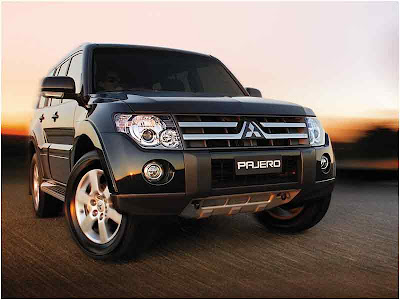HISTORY
The first Pajero prototype was unveiled at the Tokyo Motor Show in November 1973. The Pajero II prototype followed in 1978, five years later. Mitsubishi’s aim was to create more of a recreational vehicle, not just an SUV.
In January 1983, the first Pajero made its debut at the Paris Dakar Rally, taking first place in 1985 at only the third attempt. To date, the Pajero is the most successful vehicle in the Dakar Rally. This not only gave the Pajero an offroad reputation, but also helped in the sales
The Pajero is a true off-roader, and a legend in its own right. It received a massive revamp for 2007, with an all-new interior, and can be had in either three-door or five-door body styles. From 2010, powertrain options were either a 3.5-litre V6 mated to a 4-speed automatic, or a 3.8-litre V6 engine mated to a 5-speed auto. The standard package includes ActiveTrac four-wheel-drive with rear-wheel, full-time all-wheel and 4WD high and low range with locked centre differential. The short-wheelbase three-door Pajero holds five passengers, while the long-wheelbase model holds seven, with a third-row seat that can be folded into a well in the cargo area floor, or removed entirely. Standard features include an RV meter showing external temperature, time, date, compass, pressure, altitude and maintenance intervals. Also standard are a radio cassette player with 6 speakers, automatic a/c, front dual airbags, keyless entry, power windows and mirrors, and 16-inch alloy wheels. Higher models get a 6-disc CD changer, fake wood interior trim, sunroof, front and rear automatic a/c, traction control, ABS with EBD, cruise control, cool box, leather seats and 17-inch wheels. Only the top-level 3.8 models get side airbags as standard.

0 comments:
Post a Comment